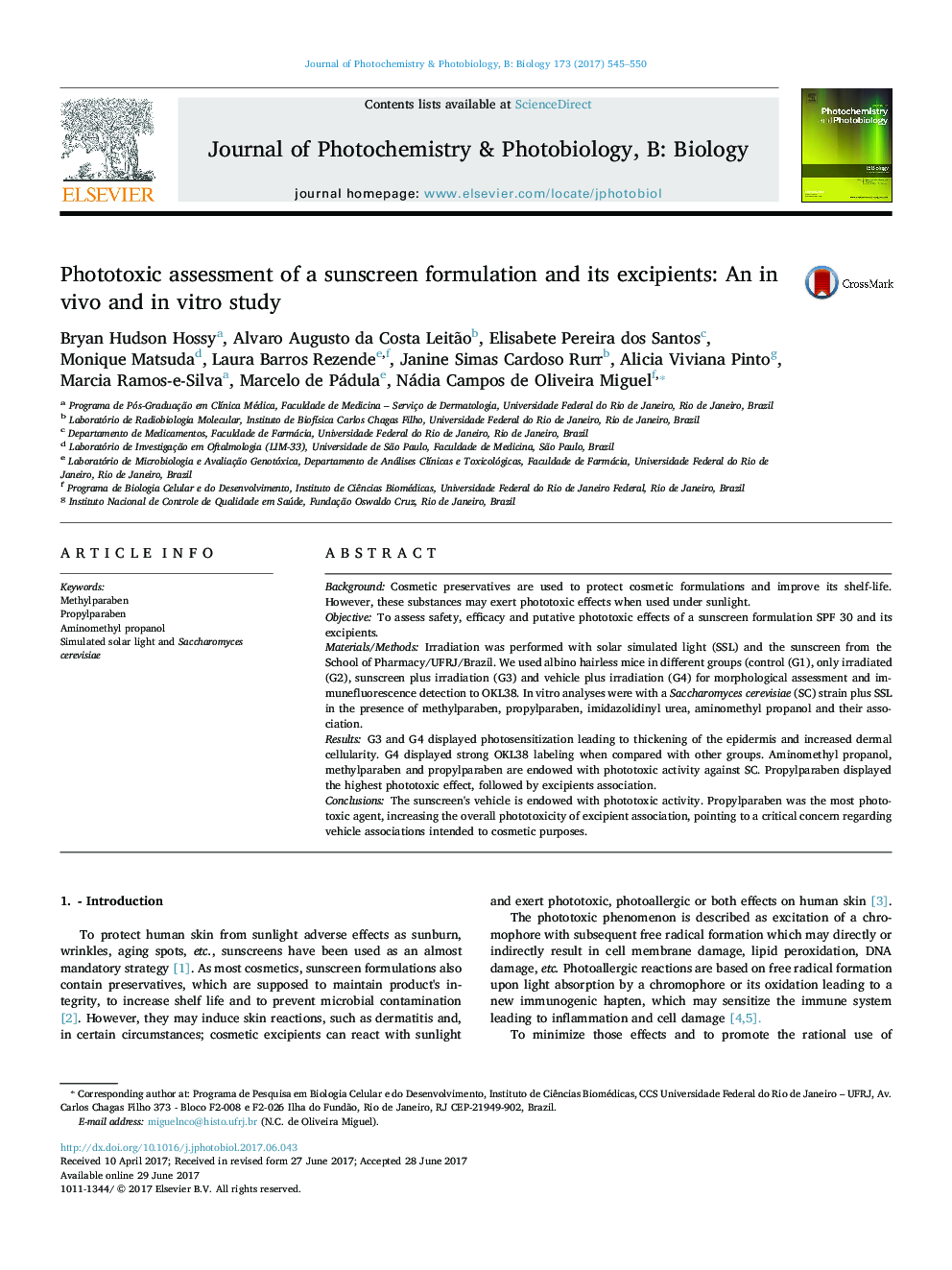| کد مقاله | کد نشریه | سال انتشار | مقاله انگلیسی | نسخه تمام متن |
|---|---|---|---|---|
| 4754418 | 1418060 | 2017 | 6 صفحه PDF | دانلود رایگان |

- Studies in vivo and in vitro results revealed that sunscreen's vehicle is endowed with phototoxic activity.
- Sunscreen excipients display phototoxic risk.
- -Propylparaben is the strongest phototoxic agent.
- Phototoxic mechanism involves oxidative stress.
BackgroundCosmetic preservatives are used to protect cosmetic formulations and improve its shelf-life. However, these substances may exert phototoxic effects when used under sunlight.ObjectiveTo assess safety, efficacy and putative phototoxic effects of a sunscreen formulation SPF 30 and its excipients.Materials/MethodsIrradiation was performed with solar simulated light (SSL) and the sunscreen from the School of Pharmacy/UFRJ/Brazil. We used albino hairless mice in different groups (control (G1), only irradiated (G2), sunscreen plus irradiation (G3) and vehicle plus irradiation (G4) for morphological assessment and immunefluorescence detection to OKL38. In vitro analyses were with a Saccharomyces cerevisiae (SC) strain plus SSL in the presence of methylparaben, propylparaben, imidazolidinyl urea, aminomethyl propanol and their association.ResultsG3 and G4 displayed photosensitization leading to thickening of the epidermis and increased dermal cellularity. G4 displayed strong OKL38 labeling when compared with other groups. Aminomethyl propanol, methylparaben and propylparaben are endowed with phototoxic activity against SC. Propylparaben displayed the highest phototoxic effect, followed by excipients association.ConclusionsThe sunscreen's vehicle is endowed with phototoxic activity. Propylparaben was the most phototoxic agent, increasing the overall phototoxicity of excipient association, pointing to a critical concern regarding vehicle associations intended to cosmetic purposes.
Journal: Journal of Photochemistry and Photobiology B: Biology - Volume 173, August 2017, Pages 545-550